Fresh herb recipes for common complaints - despite slugs and puppies
Gather that bonanza in the medicinal forest garden while you can!
This post is about appreciating fresh herbs in a dire year for gardeners. This year has been truly miserable for growing fruit and vegetables. It has been too cold, or too warm, or too wet, and too dry at all the key moments in my usual growing year. On the other hand, my fresh herbal harvests from medicinal forest gardening have been better. Here are some recipe suggestions for a herb gargle, a poultice, a steam inhalation and fruit syrup.
I cannot truly say that everything has survived well, but the greater diversity in a forest garden means that there is hope for greater resilience in the face of all of these obstacles. Despite permaculture design I may not have produced all of the planned plants but at least there is a selection of fresh produce for common ailments! Here, I want to gather together some of the ideas that have inspired me in using these fresh materials, whether from trees, shrubs or lower-growing plants. These recipes have been gathered over many years and so I no longer really know where they originated - they are wonderfully adaptable, and I would like to express my deep appreciation to all those who made them available to try out.
I have also struggled with appalling seed compost (mental note to search for much improved quality supplies next year or even try making my own). And, despite recent investment in more expensive compost, my efforts at herb and shrub cuttings seem to be pathetically lacking in vigour. And don't even mention slugs - they are mean monsters that do not care to leave even a little scrap for this sad plantaholic human. On the allotment, every single proud runner bean stalk that I have nurtured has been demolished. All of this has made me appreciate the few good outcomes I have had this year with delicious fresh home-grown plants sheltered in a greenhouse. At least I have savoured one decent cucumber and a few ripe tomatoes!
And there is one self-imposed extra reason for disaster in the garden. After the loss of our much-loved Irish Terrier, Lucy, early this year, we could no longer bear life without a dog. So, we have welcomed Poppy, another Irish Terrier from the wonderful Wootonspice Terrier breeders in Somerset, and at 3 months old she has proved to be the feistiest (is that a word) and most impetuous lover/destroyer of herbs that I have ever met. The lavender patch is in tatters, though Poppy makes a fair job of weeding the cracks between flagstones. Fortunately, her aromatic interests seem to be maturing gradually into more sophisticated and less frenzied attacks.
So, this year, I have been awakened to the idea of grabbing whatever fresh plant material I can before it is destroyed or eaten. My usual laid-back approach of waiting till there are loads of flowers/ seeds/ leaves/ fruits/ stems has not really worked so well. Now I am keen to salvage even miniscule fresh offerings and savour them. And every visit to our nearby Herb and Forest Garden in Sandford in Devon has cheered me up with fresh discoveries. In fact, many plants are still offering their bounty right now so that there is plenty both to use fresh and also to preserve.
Herb Gargle and Mouthwash
For a gargle you can make an infusion of any herb by placing the leaves and/or flowers into boiling hot water and straining and allowing to cool. The fresh herbs provide lots of aromatic input, ideal if astringent and anti-inflammatory.

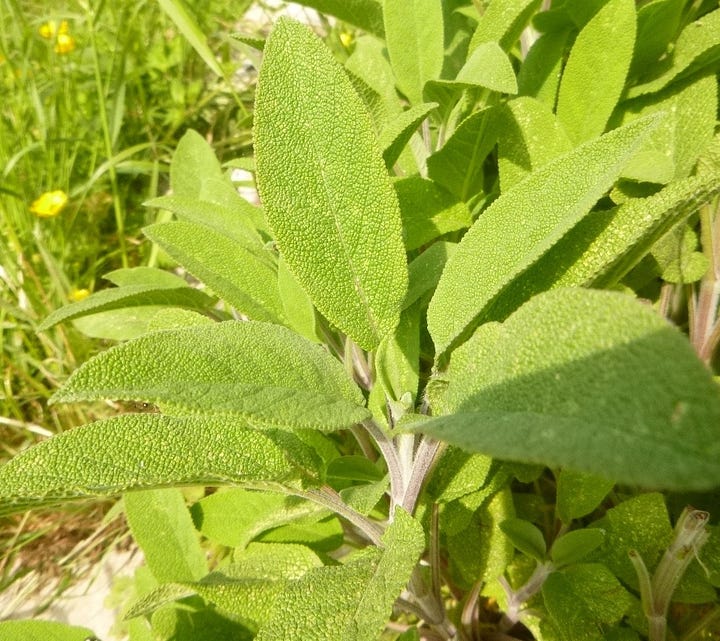
Recipe: Sage and myrtle herb gargle
15 g fresh sage (Salvia officinalis) leaves
15 g fresh myrtle (Myrtus communis) leaves
500 ml cold water
Muslin or tea towel
1. Chop the herb leaves roughly and place with the cold water in a pan and cover with a lid.
2. Heat the herb leaves and water till boiling and then remove from the heat.
3. Allow to cool and strain through muslin or a tea towel.
4. Bottle the liquid and label. Keep in the refrigerator for up to 24 hours.
5. Mix several tablespoonfuls of the infusion with several tablespoonfuls of water. Take a few sips and swirl around your mouth. Spit out rather than swallow. Repeat 2-3 times in the day.
Note: Both sage and myrtle have powerful antiseptic and anti-inflammatory properties and are ideal for making a gargle or mouth wash. You could add in mint leaves for a more refreshing taste.
Fresh Plant Poultices
Using fresh herbs in skin care is exciting to try out and can be very soothing for insect bites and other irritations! It involves bashing plant leaves enough to break them up into a paste with more readily available active constituents. If you lack the necessary equipment while out foraging you can try chewing up plant leaves into a mush!
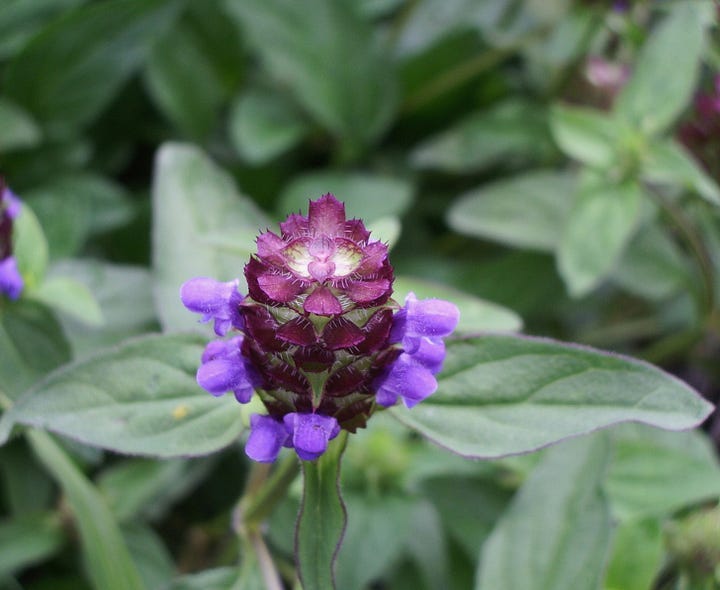
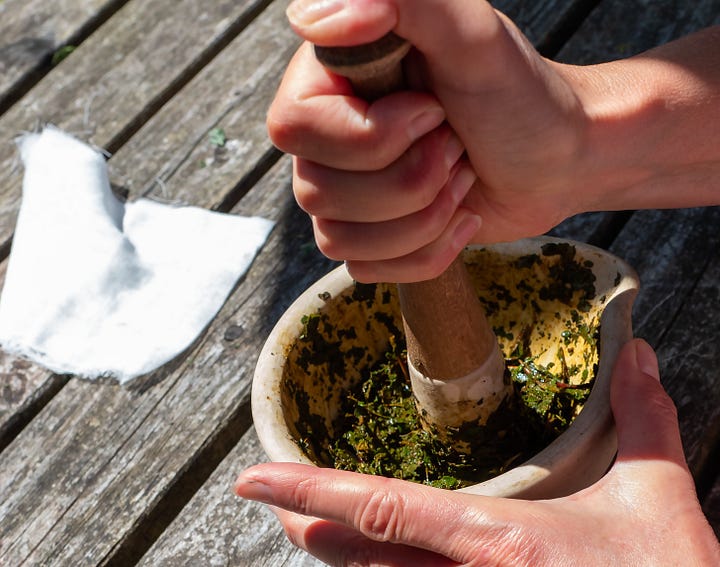
Recipe: Self-heal herb poultice
25-50 g fresh self-heal (Prunella vulgaris) leafy stems (flowers can be included)
Water
Pestle and mortar, muslin and scissors
1. Pick herb stems and brush off insects and dirt.
2. Chop or tear the herb coarsely, and place in the mortar.
3. Add about half a teaspoon of water and mash herbs into a paste using the pestle.
3. Cut a piece of muslin about twice the area of skin to be treated, and spread the herb paste onto the layer of muslin. Fold over the muslin onto the herb, like a thin sandwich.
4. Apply the muslin with herb paste direct to the affected area, tie on with strips of muslin, leave on for 30 minutes and repeat as needed.
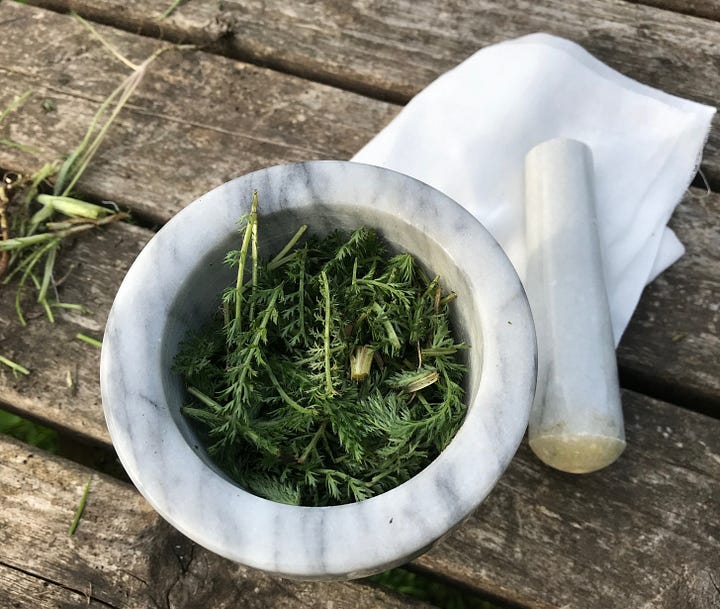
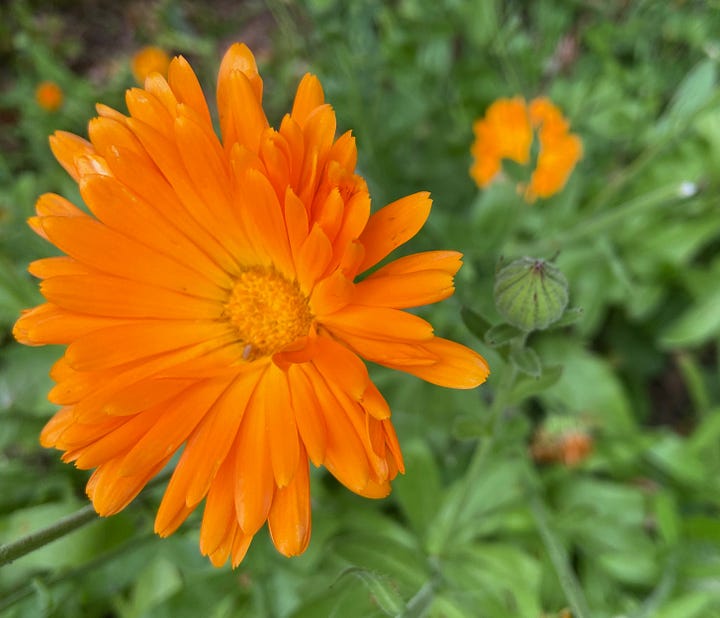
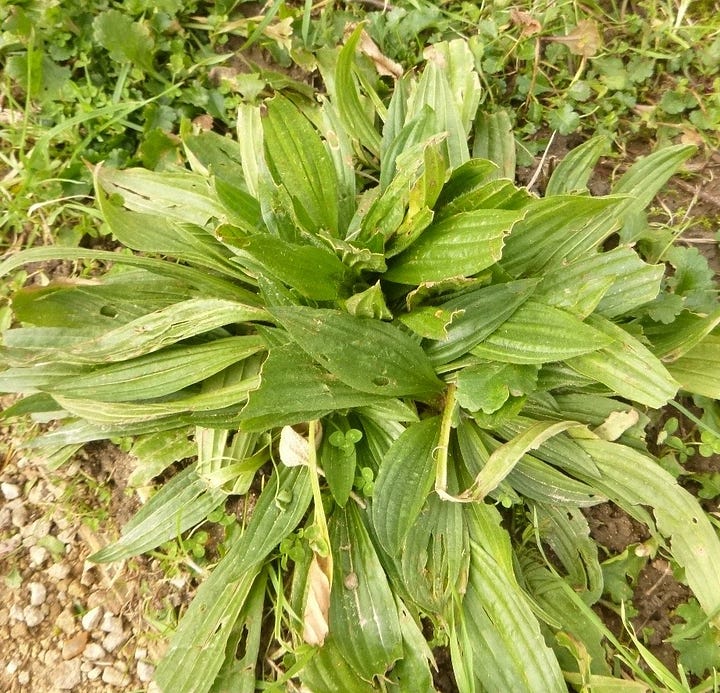
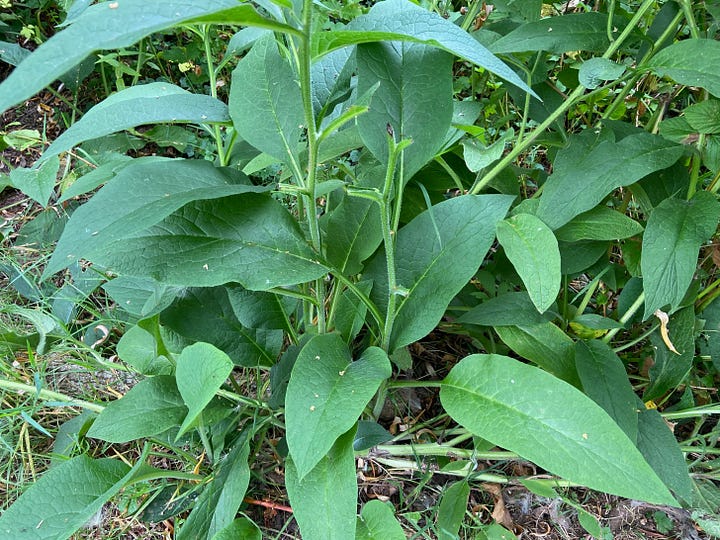
This poultice recipe can be adapted for more specific purposes. Suitable soothing herbs for use as a poultice include plantain (Plantago species) especially for insect bites or stings, splinters, boils. Antiseptic marigold (Calendula officinalis) or yarrow (Achillea millefolium) flowers and leaves can be used for bruises, burns, cuts, sore and inflamed skin. Comfrey (Symphytum officinale) helps in healing superficial wounds, repairing skin damage and recovery from bruises and sprains.
Steam Herb Inhalations
For a steam inhalation the fresh herbs can be heated in a pan of water until steaming hot. For example, eucalyptus (most Eucalyptus species can be used) leaves can help clear the sinuses and benefit respiratory complaints.
Recipe: Eucalyptus leaf inhalation
30 g fresh eucalyptus leaves
500 ml cold water
Bowel and large towel
1. Crush the herb leaves (chopping or folding them works best) and place in the cold water in a pan and cover with a lid.
2. Heat the herb and water till boiling and then remove from the heat. Allow to stand a few minutes to cool slightly.
3. Lean over the pan with a towel over your head to inhale the steam. CAUTION: the pan and steam will be hot so breathe carefully. Limit to 5-10 breaths and then take a break.
4. Repeat the inhalation every 4 hours while symptoms last.
Note: You can use other aromatic herbs ranging from flowering stems of lavender to myrtle, mint and rosemary leaves. The antiseptic essential oil constituents are carried up in the steam and into the nose, throat and respiratory system.
Fresh Fruit Syrups
Making syrup is a great way to use larger quantities of fresh and ripe fruit. The sugar acts as a preservative and extends the availability of the remedy, much like jam. You can try reducing the amount of sugar and freezing the result - likely it will be not so thick but still ideal for making up cordials with hot water.

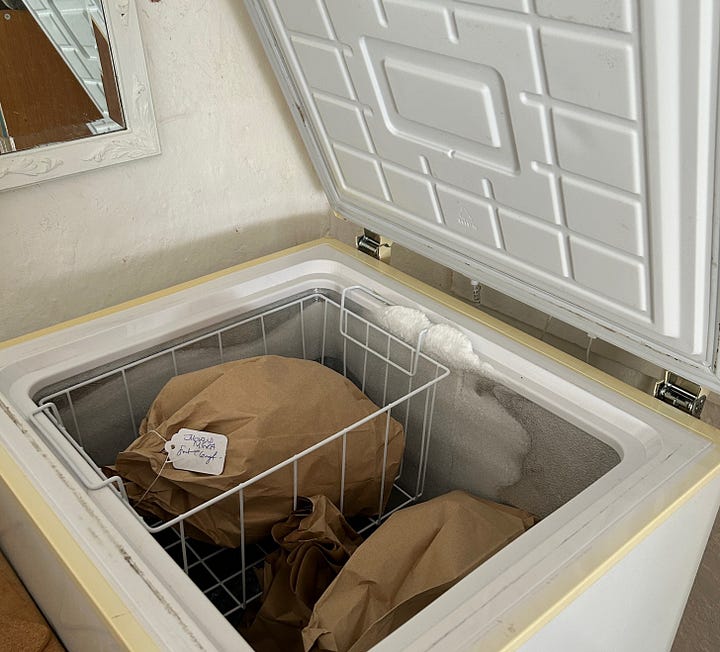
Recipe: Elderberry syrup
Ripe elderberries on stalks
Water
Sugar
Collect fresh ripe elderberries, dark purple or black. It is not essential to remove all stalks but pick over and wash if there is damage or dirt. Place all in a heavy saucepan. Add a little water. Heat until the fruit juice runs and berries easily squash with a wooden spoon, then strain through muslin or a tea towel. Discard the dry squashed berries to compost. In a large heavy pan put 450 g sugar to every 500 ml of juice and gently heat, stirring until all dissolved. At this point you can add further flavouring if desired such as a little powdered cinnamon or cloves. Allow to simmer for 15-20 minutes. Then cool a little and pour into well-washed glass sauce bottles with screw-on tops. To lengthen shelf life, you can stand these bottles with tops slightly unscrewed in simmering water for 30 minutes. Then remove from the water and tighten the caps, allow to cool and label. This is a delicious remedy for taking neat in teaspoonful doses or diluting to make hot comforting drinks in colds and flu.
Note: Harvesting fresh produce from a forest garden can be extended over a long season and amounts are unpredictable. I put smaller amounts of fruit straight on a tray to freeze and then they store well in a freezer bag. It is worth labelling the bag to remember what you put in the freezer and avoid mixing fruits unintentionally. When there is a bag full enough of fruit you can take it straight to the pan, probably without needing to add further water due to the accumulated ice.
Making notes of recipes
There are many more ways to use fresh plant materials for making healing remedies. As with the syrup, some of these preparations can also preserve herb activity for a longer period. My advice to anyone trying out herb recipes is to always keep notes!!! At first I used to write every recipe on a record card thinking that an alphabetical sort system would work well. But recipes change as they are tried out, sometimes ingredients and quantities are changed and improved. So, I began to use shorthand notebooks to have space to scribble freely, always recording the date. As each notebook became full then I would go back and number the pages to make an index. This approach has proved incredibly useful in tracking down variations on recipes over the years. It is a brilliant basis for my MAKING RECIPES # series of posts for paid subscribers. While I want to maintain all my other Medicinal Tree Woman posts free to subscribers, the MAKING RECIPES # series is available to paying subscribers who want to be more involved through sharing comments and who give me the incentive to write more on my practical experience of growing, harvesting, making, preserving, selling healing remedies and body care products from the medicinal forest garden. Thank you to all subscribers for your support!! I leave you with a clip of Poppy having her way with lovely fresh herbs and other plants including ladies mantle, mallow, pumpkin, self-heal and yarrow!


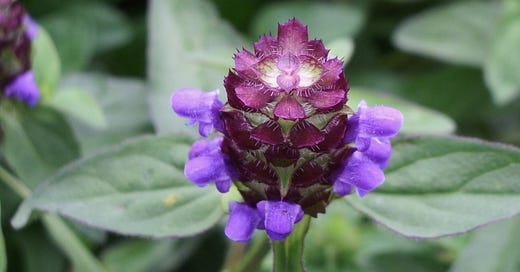




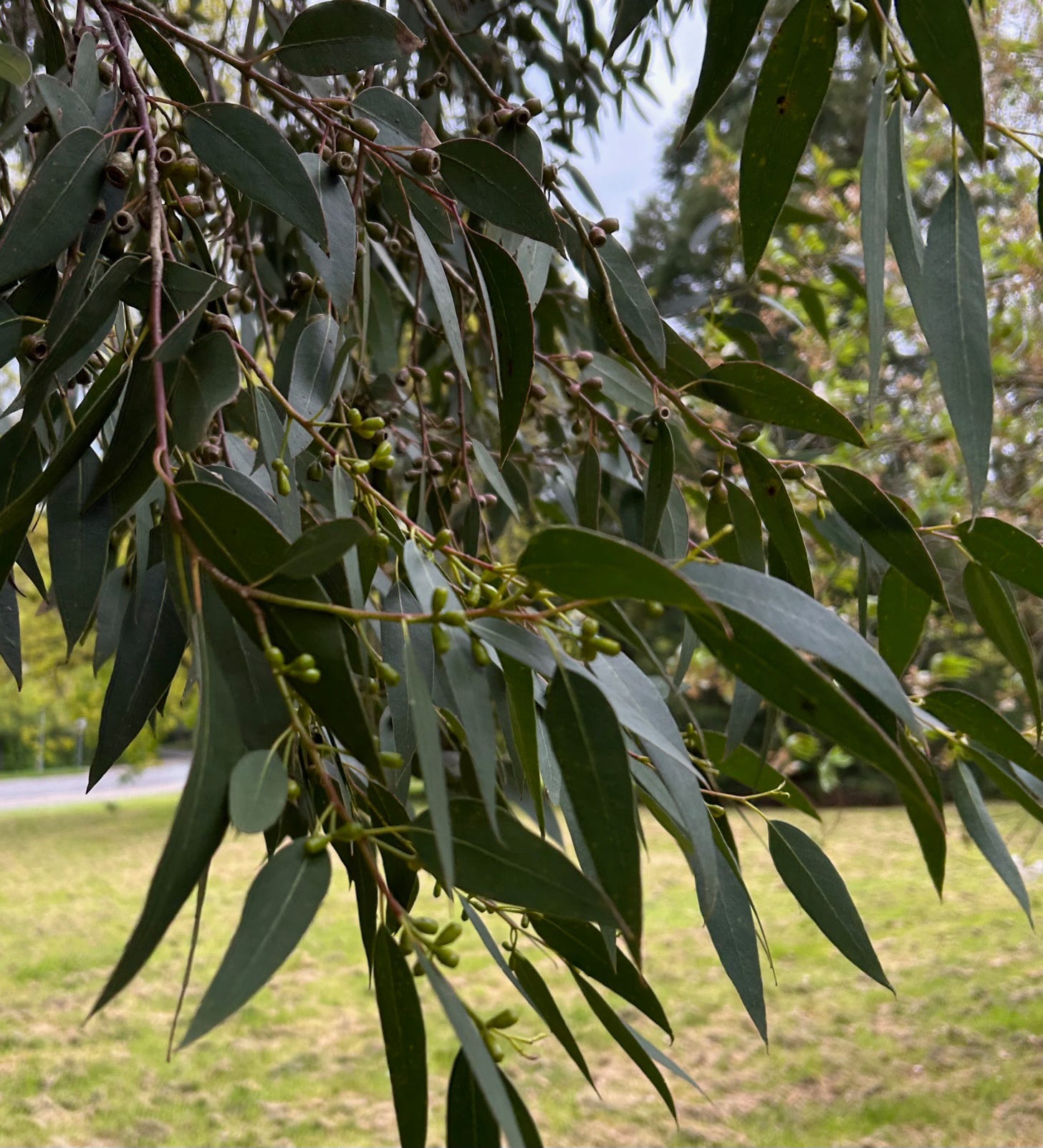
Lovely post Anne! I hear you regarding slugs! It's been pointless growing any leafy vegetables this year, and our fruit bushes (strawberries and physalis) have only been kept safe by being placed on high shelves in the greenhouse and monitored daily. I like to make elderberry shrub (with apple cider vinegar) at this time of year, and currently have a nice batch on the go. I'd be interested to hear your thoughts on shelf life for such preparations? I find they last a bit longer than syrups if bottled well. Any tios on extending the shelf life?
Hi Sarah, thanks, I would love to see your elderberry shrub and apple cider vinegar recipe! I am looking out across a loaded apple tree in gardens of a nearby care home which never seems to get harvested, so I plan to ask them to let me have some this year for cider vinegar making experiments! My preserves at home - cordials, syrups, sauces, jams, jellies, chutneys - vary a lot in keeping ability. I do often try to minimise sugar content but it is a risky business - likewise home-made cider vinegar is quite weakly acidic so not always ideal. And so much is unpredictable - while a few bottles may start to mold or blacken quite quickly, some will last as long as 4 years. So, I probably would benefit from more attention at home on the 'clean jars' front as well as an 'exact quantities' approach. Of course this attention to detail is crucial if making herbal remedies for use with patients!